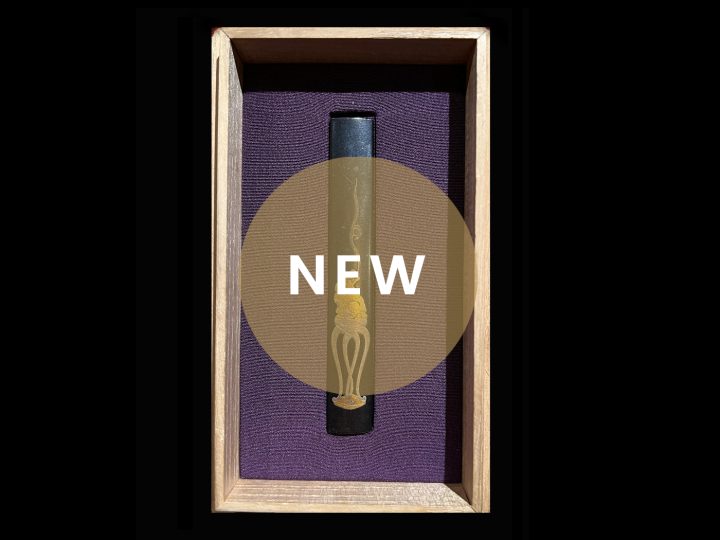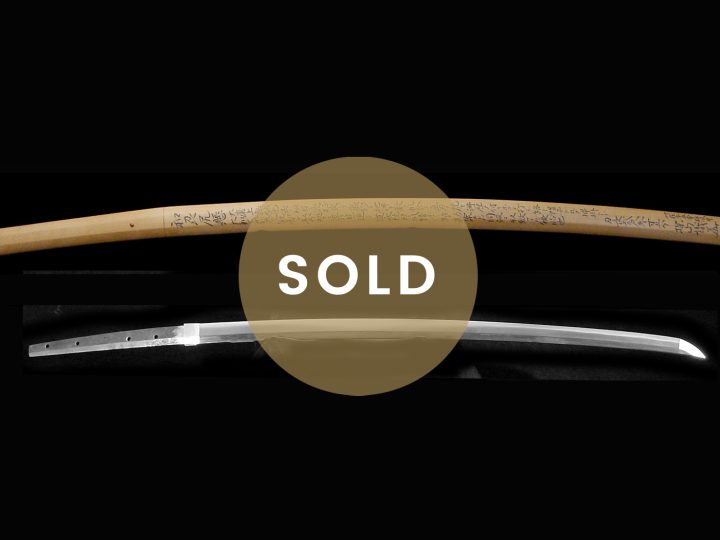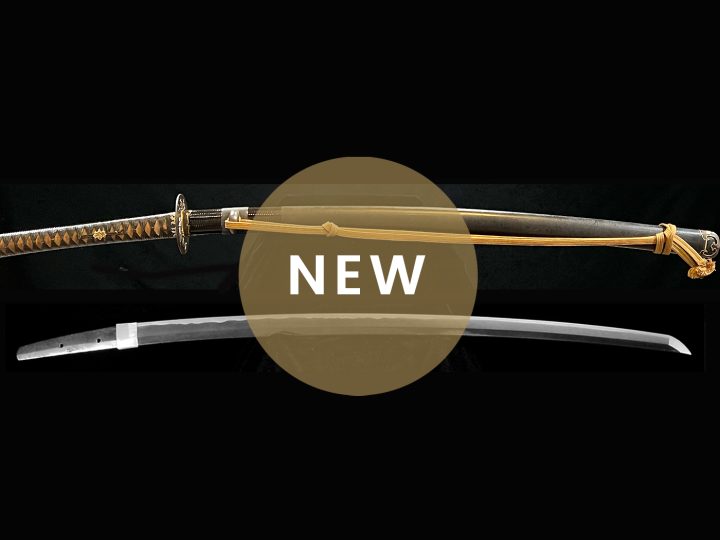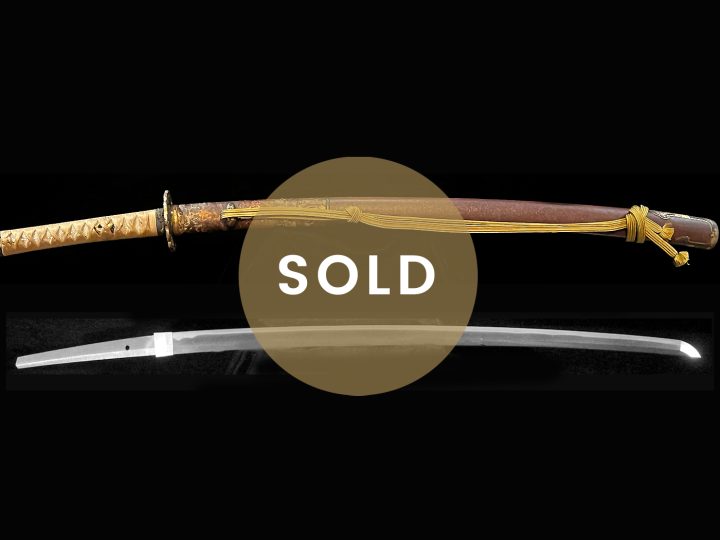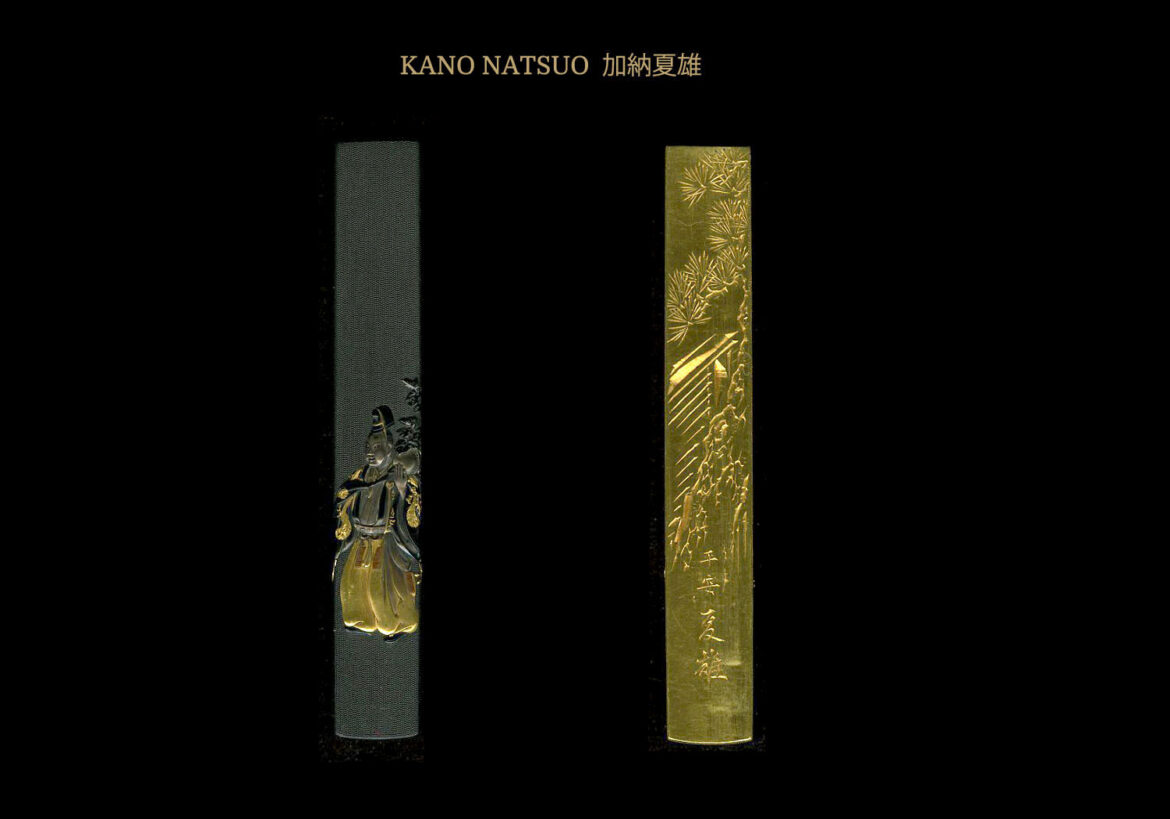
Kanô Natsuo (加納夏雄) was born on April 14th of the 11th year of Bunsei (1828) as the son of a rice dealer in Kyôto. In the 5th year of Tenpô (1840) at the age of seven, he was adopted by a sword dealer, and grew up learning the sword dealing business. At the age of twelve, he was trained by a goldsmith by the name of Okumura Shôhachi (奥村庄八) and studied the basic skills of metal work such as nanako and uchidashi chiseling.
In the 11th year of Tenpô (1840), he joined the studio of Ikeda Takatoshi (池田孝寿), who belonged to the Ôtsuki school to study the art of ke-bori and katakiri-bori. He was called Toshiaki (寿朗) around this time in his career. While training in metalworking, he also took drawing lessons from Nakajima Raishô (中島来) who belonged to the Maruyama school of painters. He also took Chinese classical literature lessons from Tanimori Tanematsu (谷森種松) about this same time. These backgrounds in different areas account for Natsuo’s (夏雄) workmanship based not only on excellent skills but also on intellectual taste.
Because Natsuo (夏雄) was a commoner rather than of the Samurai class, he classified himself as machi-bori artist rather than an ie-bori artist such as the members of the Gotô family who had the patronage and prestige of being backed by the Tokugawa Shogunate. In around the third year of Kôka, Natsuo (夏雄) opened a workshop in Kyôto and in the first year of Ansei (1854), at the age of 27, he moved to Kanda in Edo.
In the period of the late Edo Shogunate times and into the Meiji era, there were a great many artisans who produced outstanding artistic works. Among them all, however, Natsuo (夏雄) has long been considered to have been the best. Not only did he produce a great many works of art, he also trained and developed a good number of students who became great artists in their own right. Some of the more famous were Kagawa Katsuhiro (香川勝広), Tuskada Shûkyô (塚田秀鏡), Unno Shômin (海野勝珉) and Shôami Katsuyoshi (正阿弥勝義).
Natsuo (夏雄) died on February 3, 1898.


